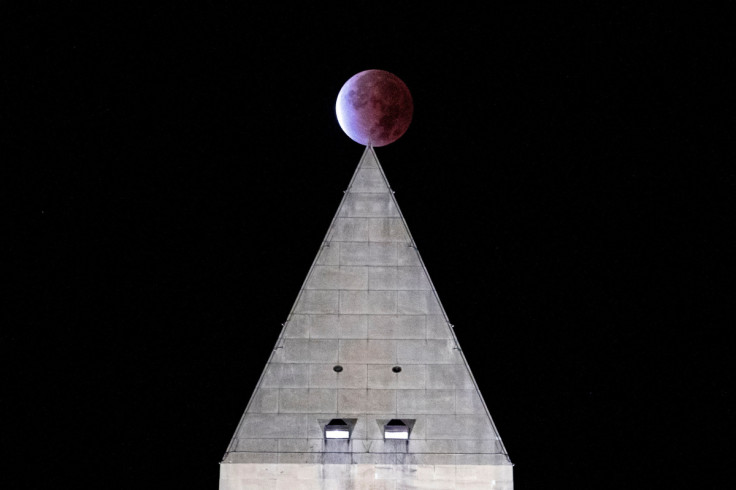Beaver Blood Moon: Photos, When To Expect Next Total Lunar Eclipse
KEY POINTS
- The totality phase was visible for almost an hour and a half in North America
- The next total lunar eclipse will occur two years later, in 2025
- The red tinge of the moon is caused by scattering of light by the Earth's atmosphere
Tuesday marked the last total lunar eclipse of the year and it was a true delight for skywatchers. The Beaver full moon turned red as it transitioned into an eclipse.
Also called the Blood moon eclipse, it was visible in North and Central America, Asia, Australia, the Pacific Islands, and parts of South America.
The world will have to wait till 2025 to witness the next total lunar eclipse. However, for those who missed out on the celestial show, skywatchers around the world captured the event through a lens for others to see.
A total lunar eclipse glows above @NASA_SLS and @NASA_Orion at Pad 39B in the pre-dawn hours on Nov. 8, 2022. This "blood moon" will not return to our sky until 2025.
— NASA's Exploration Ground Systems (@NASAGroundSys) November 8, 2022
📸: NASA/Sean Cannon pic.twitter.com/zaStqKNq4N
A lunar eclipse, which always falls on the full moon night, occurs when the moon, Earth, and sun are aligned in one straight line. The Earth is between the two and the moon moves into its shadow.
Blood moon can only occur during a total lunar eclipse and the appearance of a red tinge is due to the scattering of light from the sun by the Earth's atmosphere.
The totally eclipsed blood red moon passes behind the antenna on the Empire State Building in New York City, Tuesday morning in New York City #bloodmoon #LunarEclipse #beavermoon #newyork #newyorkcity #nyc pic.twitter.com/aVLN50CHw5
— Gary Hershorn (@GaryHershorn) November 8, 2022
As the moon enters Earth's shadow, it initially appears dull and dark, only to be visible in a reddish hue later. The totality phase, when the moon is fully engulfed in Earth's shadow, was visible for almost an hour and a half in North America.
This gave plenty of time for skywatchers to capture snaps of the dramatic moon. And unlike a solar eclipse, there was no need for special equipment or glasses to view the lunar eclipse. The naked eye will do just fine, and perhaps a pair of binoculars or a telescope for those who want to view the Moon's surface and take in the reddish shade in better view.
The Election Day lunar eclipse blood moon sets behind the U.S. Capitol dome in Washington, DC #LunarEclipse #BloodMoon pic.twitter.com/Y1PJ37I8qf
— Bill Clark (@billclarkphotos) November 8, 2022
The next total lunar eclipse and the chance to see the blood moon will be on March 14, 2025. Nevertheless, there will be partial and penumbral lunar eclipses before the next total lunar eclipse that eclipse enthusiasts will be able to enjoy. Two of these will occur in 2023 followed by two more in 2024.
The Moon started the progression into the Earth's shadow at 3:02 a.m. EST, though at this time, the effect of the eclipse wasn't as noticeable. The totality phase began at 5:17 a.m., with the deepest point of the eclipse at 5:59 a.m, as per NASA. The moon started to move out of the Earth's shadow at 6:42 a.m.
For those who missed out on the eclipse due to geographical differences or weather conditions, live streams of the event were organized. For instance, one could view it via this live stream, courtesy of the Springfield Science Museum, or this one from the Astronomical Society of South Australia, for those who want to see the view from Victoria.

© Copyright IBTimes 2024. All rights reserved.





















